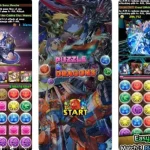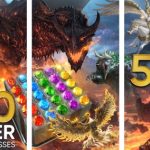Jigsaw puzzles are a classic pastime that can be enjoyed by people of all ages. There are many different types of jigsaw puzzles, and each offers its own set of challenges and rewards. In this blog post, we will take a look at 10 different types of jigsaw puzzles. Whether you are a beginner or an experienced puzzle enthusiast, we hope you will find something new to try!
Table of Contents
Difficult puzzles
Difficult puzzles are complex. They may have over 40.000 pieces, or they may have repeating objects on them, which makes the overall process extremely complicated.
2D
The goal is to connect the pieces and create a 2D image. They can be educational or just for fun. Some sub-types include glowing puzzles or extremely difficulty types. This is the most popular type on the market.
3D
These puzzles are used to represent actual models, items or products. For instance, you will use pieces to create a house. The pieces are made from foam and they work as building blocks.
Hidden Image
Basically, these are 2D puzzles with an additional feature. Once you are done, you will have to find a hidden object, item or a character on that image. They are known as an improved and more appealing type compared to traditional 2D versions.
Colored
The pieces are black and white. But, once you connect all of them and create an image, shape, or something else, you can paint them to get a more detailed, realistic look. Some puzzles show a complete or partial image on the box.
Floor
Floor puzzles are 4 feet tall or even taller. They are commonly found in classrooms where many children can work on them to complete them. Their pieces are bigger than in other puzzles.
Glow in the dark
Once again, these are 2D puzzles. However, when in the dark, they will glow thanks to special colors used. All of them must be left on the light for some time before they can glow.
Murder Mystery
You will have to complete a puzzle. Then you will use logic to find the answer to a mystery present. It can be a murder or anything else. Most puzzles won’t display the complete finished puzzle, and you need to read the story before starting.
Custom puzzles
Custom puzzles can have any image you like. This can be your personal image, a portrait, a photo of a loved one, or anything similar. As the name suggests, they are custom made.
Photomosaic
They may look like any other puzzle, but they have many, smaller images on them. These can be seen from a distance or up close, and they can make the overall experience even better. Additional images can make the process more complicated or easier, depending on the nature of a puzzle.
Where can you play these types of jigsaw puzzles?
While you can always play with an actual jigsaw puzzle, today there are a number of good online options where you can solve jigsaw puzzles:
- Im-a-puzzle.com: has thousands of jigsaw puzzles to try. You can change the puzzle pieces shapes, and the number of pieces you play with to tailor the game to your needs.
- Puzzle Garage: has hundreds of puzzles which you can solve in real time with friends.

